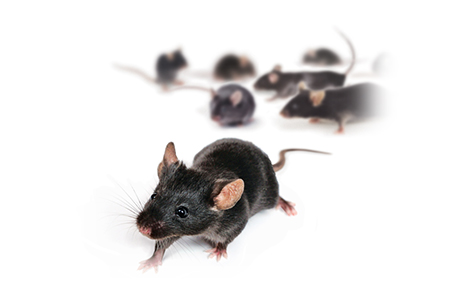 Animal identification is a vital element in any research project requiring the use of animal models. The identification of an animal may be the only link to essential data, such as sex, genotype, study parameters, and results. Animal identification systems also assist with breeding record keeping.
Animal identification is a vital element in any research project requiring the use of animal models. The identification of an animal may be the only link to essential data, such as sex, genotype, study parameters, and results. Animal identification systems also assist with breeding record keeping. In some cases, the success of your studies may depend on the type of animal identification method you choose. Accuracy of study results will be tied to the ability to identify specific animals.
How to Choose an Animal Identification Method
Choosing the right animal identification method is critical. Loss of identification can render the animal, and the data it would provide, unusable. If the animal becomes unusable, the study will have to be repeated. Proper, secure animal identification is therefore both necessary for good science and part of our ethical imperative to reduce the number of animals we use.When choosing an identification method, the type and length of study being conducted may determine the best method to use. Here are some other parameters to consider when deciding on the type of identification to use:
- Preference for visual or electronic read
- Number of unique identification numbers required
- Length of study
- Housing requirements and recombining
- Age and animal characteristics
- Equipment and training needs
Community Standards for Animal Identification
The Federation of European Laboratory Animal Science Associations (FELASA) published a report meant to assist investigators in choosing the most appropriate identification method for studies. The Federation's report concluded that "early individual identification is a prerequisite for valid and reliable research using animals; this is especially true in the case of genetically altered animals. Identification is necessary to link samples, research data and genotype to the individual animal."The FELASA report categorized animal identification by whether it was permanent, invasive, or whether it generated a tissue sample for genotyping in addition to providing animal ID. Noninvasive and temporary methods included shaving fur, felt tip marker, or alcohol-based pens and traditional ear tags. Methods considered to be invasive and permanent included tattoo (ear, tail, toe/footpad), automated tattoo, microchip transponder, mini-ID ear tags, p-Chip, and ear notching (which also yields a sample for genotyping).
Accessing Animal Identification Equipment
Many vendors provide the necessary equipment and supplies for rodent identification. Additionally, most animal suppliers can apply some or all the ID methods before shipping animals.For a full listing of animal ID vendors, please refer to the Lab Animal Buyers Guide.
















.jpg)

.jpg)
.jpg)
.jpg)
.jpg)





.jpg)


.jpg)
.jpg)




.jpg)




.jpg)

.jpg)




